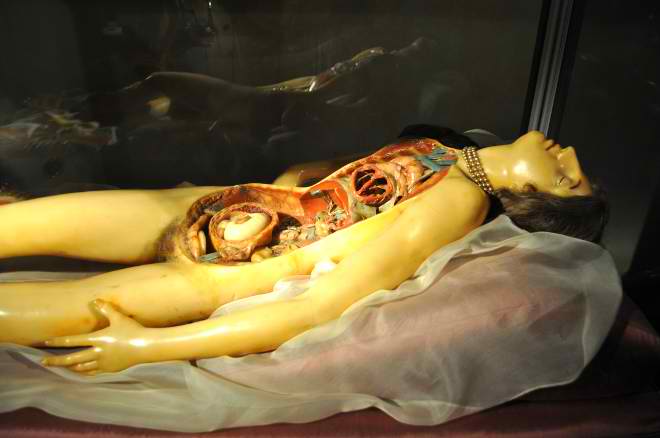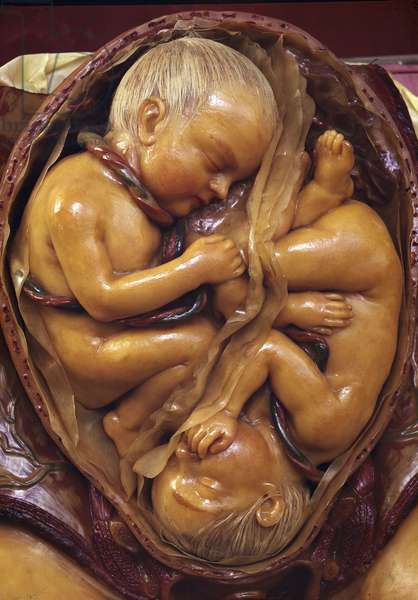Clemente Susini is remembered for creating what is probably the most extensive collection of anatomical wax works in the world. He first studied sculpture in Florence, but in 1773 became an apprentice there at the museum of natural history in a workshop recently established to produce wax models for teaching anatomy. Within a few years he became chief modeler at the institution.
Florence was at the time under Austrian rule, and when emperor Joseph II visited the museum in 1780 he ordered 1192 such wax models. They were carried by a train of mules over the Alps and down the Danube River to be exhibited in Vienna, and as a result Susini’s work came into great demand by surgeons and anatomists. He eventually became professor of art in Florence, teaching drawing nudes as well as continuing to run his workshop.
Many of Susini’s models remain on display in Vienna, Florence, Budapest, and Cagliari. Famous examples of partially dissected women that look remarkably alive are the Venerina (Little Venus) at the Palazzo Poggi Bologna (above right), and the Venus anatomique at La Specola in Florence (above left).







Leave a Reply